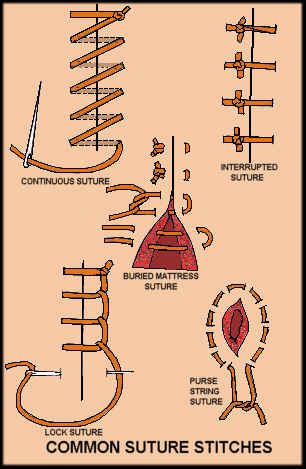Mattress Stitch Suture

An excellent and underutilized technique is the placement of vertical mattress sutures in traumatic wounds which combines the advantages of the deep dermal removing tension from the skin surface and the epidermal simple interrupted suture wound edge approximation eversion.
Mattress stitch suture. This type of suture tends to be performed using non absorbable suture material. Truth told i don t personally use these sutures often for primary repair as they don t create as meticulous of wound edge apposition as. Mattress sutures are often performed as the anchoring stitch for skin flap closure 1 mattress suture techniques also promote skin edge eversion 1 8 because scars tend to retract over time.
There are two basic variations. This is an especially useful technique for areas where skin is lax or thin and. The horizontal mattress stitch is a suture technique used to close wounds it everts skin well and spreads tension along the wound edge.
Advanced suture techniques are covered in this lesson. Learn how to perform a horizontal mattress suture. The far and near suture is a modified vertical mattress stitch that uses the tension created by a pulley action to close wound tissue.
The vertical and the horizontal. The vertical mattress stitch often called vertical donati stitch named after the italian surgeon mario donati is a suture type used to close skin wounds the advantages of the vertical mattress suture are that it provides closure for both deep and superficial layers and also allows perfect eversion and vertical opposition of the superficial skin edges. It s most useful for high tension wounds especially when the edges are fragile or frayed.
This makes it ideal for holding together fragile skin as well as skin under high tension such as the distant edges of a large laceration or as the initial holding suture in complicated repairs. Horizontal mattress suturing is a fairly useful back pocket trick to have in your repair arsenal. Because the pulley stitch reduces the surface area of large wounds in which closure cannot be accomplished completely by traditional side to side sutures it is an excellent technique for areas such as the legs.
The mattress sutures both horizontal and vertical are one of the most commonly used methods for skin closure mattress sutures are used especially when skin edges must be closed under tension as they achieve good skin eversion which aids wound healing and produces less prominent scaring. It is strong and can be used to close relatively wide wounds. The horizontal mattress is so secure that it can compromise blood.


















